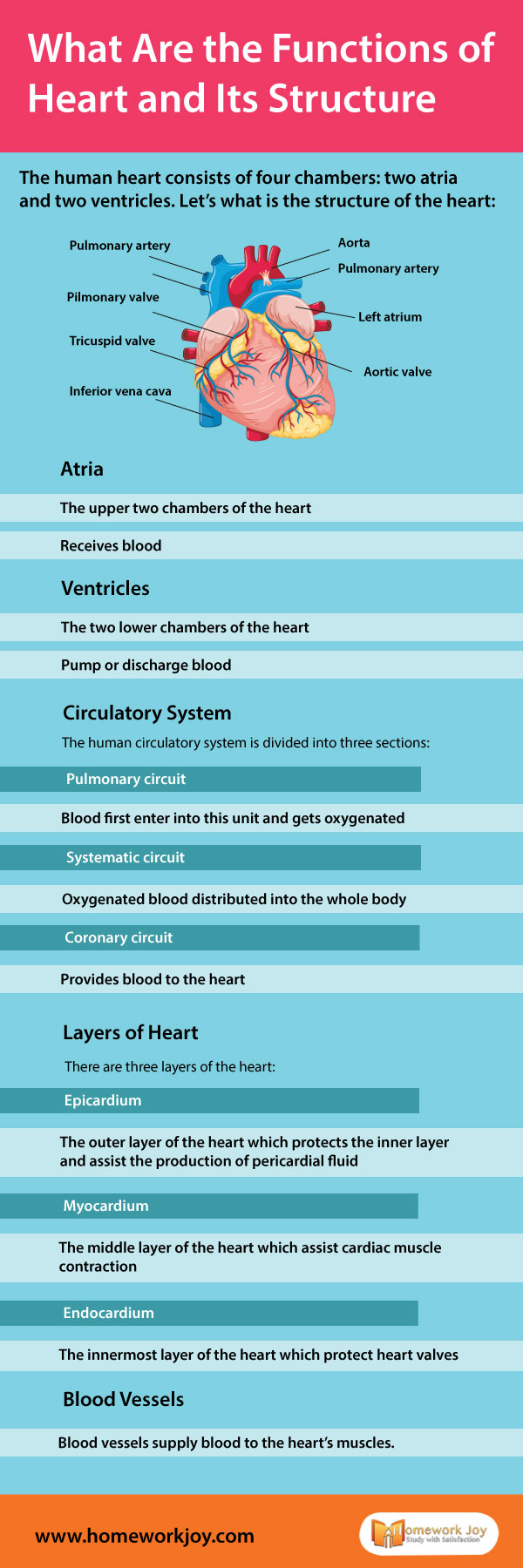Do you know which is the central part of our circulatory system? Yes, it is our heart. It is primarily responsible for distributing oxygen and pumping blood in our whole body. Due to these tasks, the heart is considered the central part of our body. Thus even a small dysfunction or abnormality of the heart can hamper the whole body.
To understand human organs better, also check the following:
A healthy adult’s heart could go on 72 beats per minute; this cycle is known as the cardiac cycle. Let’s what is the function of the heart and its structure:
Structure of the Heart
The human heart consists of four chambers: two atria and two ventricles.
Atria
There are two chambers known as atria, located in the upper right portion of the heart. The main aim is to receive oxygen-free blood. These chambers are separated by valves known as atrioventricular valves.
Ventricles
Ventricles are the lower two chambers of the heart. Their main function is to pump oxygen-rich blood throughout the whole human system. Due to these ventricles, blood can reach even to a small cell. Likewise, artia, ventricles too, are separated by valves known as semilunar valves.
Circulatory System
The human circulatory system is divided into three sections:
- Pulmonary Circuit
Blood first enters into this unit and gets oxygenated; then, it carries deoxygenated blood away from the right ventricle to the lungs. After that, the blood comes back to the left atrium.
- Systemic Circuit
Oxygenated blood distributed into the whole body. Also, it collects carbon dioxide and waste products from different parts of the body.
- Coronary Circuit
The circuit circulates blood to various blood vessels. The main aim is to provide oxygenated blood, especially to the brain vessels.
Layers of Heart
There are three layers of the heart:
Epicardium
The outer layer of the heart which protects the inner layer and assists the production of pericardial fluid. This layer is composed of mesothelial cells and connective tissues.
Myocardium
The middle layer of the heart, which assists cardiac muscle contraction. This layer of the heart is composed of cardiomyocytes.
Endocardium
The innermost layer of the heart chambers and valves which protects heart valves. It comprises of subendocardial.
Blood Vessels
All the blood that heart pumps pass through these blood vessels. These vessels are like elastic tubes that carry blood to the whole human system. So these are essential to sustain life. There are three main types of blood vessels: arteries, capillaries, and veins.
Thus these were some functions of the heart along with its structure. If you want more help related to the biology topic, get instant Biology assignment help from our experts.
